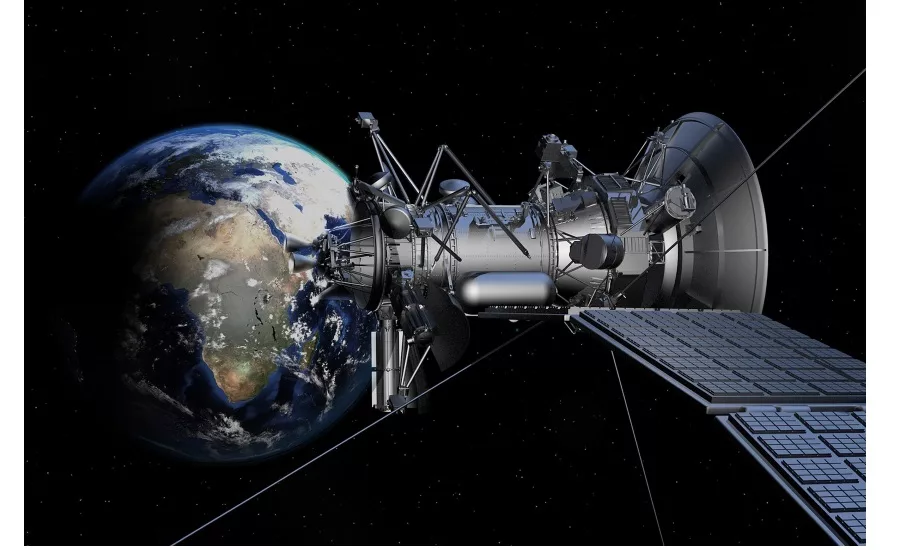The vulnerability of satellite communications

Over the past decade or so, we’ve witnessed the increasingly significant role satellites play in today’s technology, from providing geolocation capabilities to enabling logistics and navigation, to the intelligence gathering conducted by nation states. The satellite industry has seen a resurgence over the past few years, and is now in a prime position to play a key role in meeting the ever-growing market demands, such as 5G backhaul and the Internet of Things (IoT).
However, an increase in the deployment of satellites have left space-based assets a target for hackers looking to compromise sensitive information, with potentially devastating consequences. With the stakes so high when it comes to protecting the data that satellites carry, security cannot be an afterthought. It must play an integral part of the design process itself.
Meeting the demand
With connectivity demands ever rising, we are now seeing the early deployment of 5G starting to take place. This has led to a new space race among technology organizations to deploy constellations that deliver the high-speed connectivity, bandwidth and capacity, that is needed to satisfy demand. Users expect to have the same quality of connectivity anytime, anywhere, and satellite communications will extend 5G networks to rural and hard-to-reach areas, such as boats and trains. When it comes to creating a safe and secure connected experience, satellites will have a major part to play and security considerations will need to be made in real time.
Satellite ground technology is also advancing with more innovation and scalability, as it looks to leverage virtualization, orchestration and network splicing to support 5G connectivity. Software-defined satellites that can be reprogrammed to move capacity depending on the market need, are now a must-have for the industry to enable future growth. With so many new 5G and IoT applications connections as potential doors for hackers, satellites are the gateway responsible.
However, amongst the innovation and excitement, security can often be left behind. The reality is that as more satellites are deployed, more satellites must be protected, and it is crucial that organizations consider how their systems may be potentially compromised by hackers. There was a time when satellites were seen to be almost untouchable, however now it is relatively simple for hackers to purchase and operate the right equipment in a way that is a cause for concern. Almost anyone can aim an antenna at a satellite and send communication to it, so it is critical that a level of trust is established between earth bound devices and satellites.
The challenge of security in space
Security is the most significant area of technical concern for most organizations deploying IoT systems and now 5G networks, with multiple devices connected across networks, platforms and devices. This is also true for satellite, given the size and scope, as well as the number of earth station access points. The rise in IoT means if one single device isn’t encrypted or the communication isn’t protected, a bad actor can manipulate it and potentially a whole network of connected devices. It isn’t just the devices themselves that need to be protected, but it is also every stage of data transmission too.
A key first step is for organizations to understand the vulnerabilities they have and how they can be exploited. For example, many organizations are working with legacy satellite communications that are not easily updated. Significant testing must be completed to ensure upgrades for communication with next-generation platforms will not interfere or impact other key system functions. Weak encryption and old IT equipment are key vulnerabilities for satellite networks, which are a prime target for hackers to exploit.
Ensuring cyber resiliency
The good news is that as satellite communications have advanced, so have the security solutions that protect them. Trusted computing technology, such as the standards developed by TCG, ensure trustworthiness of devices, device identity and security validity, such as through the use of cryptographic keys. Security options provide building blocks to create secure systems, for every risk level and size.
Network security infrastructure enables communications to be authenticated at every stage of data transmission that gets sent to the earth-bound devices, before it gets sent up to the satellite. This allows the earth-side devices to become effective firewalls to prevent possible end of denial service attacks that can be sent up to satellites, when it could be too little, too late. Even with huge volumes of satellites and devices communicating, the satellite will ignore communication if authentication has not been successful. This plays a key role in establishing overall satellite network visibility by ensuring the devices that are communicating meet compliance requirements, have access control and provide orchestration. By encrypting communication at the networking level, data is also protected when traveling across the satellite ecosystem.
Practical security solutions rely on a special component within a device called a root of trust. A root of trust forms the foundation of the device and is secured for a defined range of applications. They undergo in-depth security validation and once deployed, they remain trusted throughout a device lifetime. This is a huge advantage when we think about the thousands more devices we’ll see as a result of IoT and 5G.
A root of trust is a key aspect of security, as it is the generation, storage, and protection of a cryptographic device identity, which serves as the all-important vehicle for demonstrating trust worthiness.
Connectivity from the ground up
Network security must be the first consideration during the design stage for communications. It is crucial that the reliability and integrity of the network is guaranteed, as well as protecting a company’s reputation. The fall out of a cyberattack can cause significant damage, from financial losses to fines for failing to comply with data protection legislation. A casual approach to security could make a huge dent in an organization’s finances, or put them out of business completely.
Satellites are already being used across critical organizations, including militaries, governments and healthcare, increasing the stakes of a cyberattack. But no matter the size or purpose of an organization, security must be top of the agenda.
Real-time security solutions must be implemented to allow for trusted relationships between interconnected devices. Any that do not operate in real-time present a real issue, as hackers can infiltrate a system and be out in seconds. As technology advances, security must be comprehensive and future proof. It cannot be an afterthought. There is simply too much for organizations to lose.
Looking for a reprint of this article?
From high-res PDFs to custom plaques, order your copy today!




